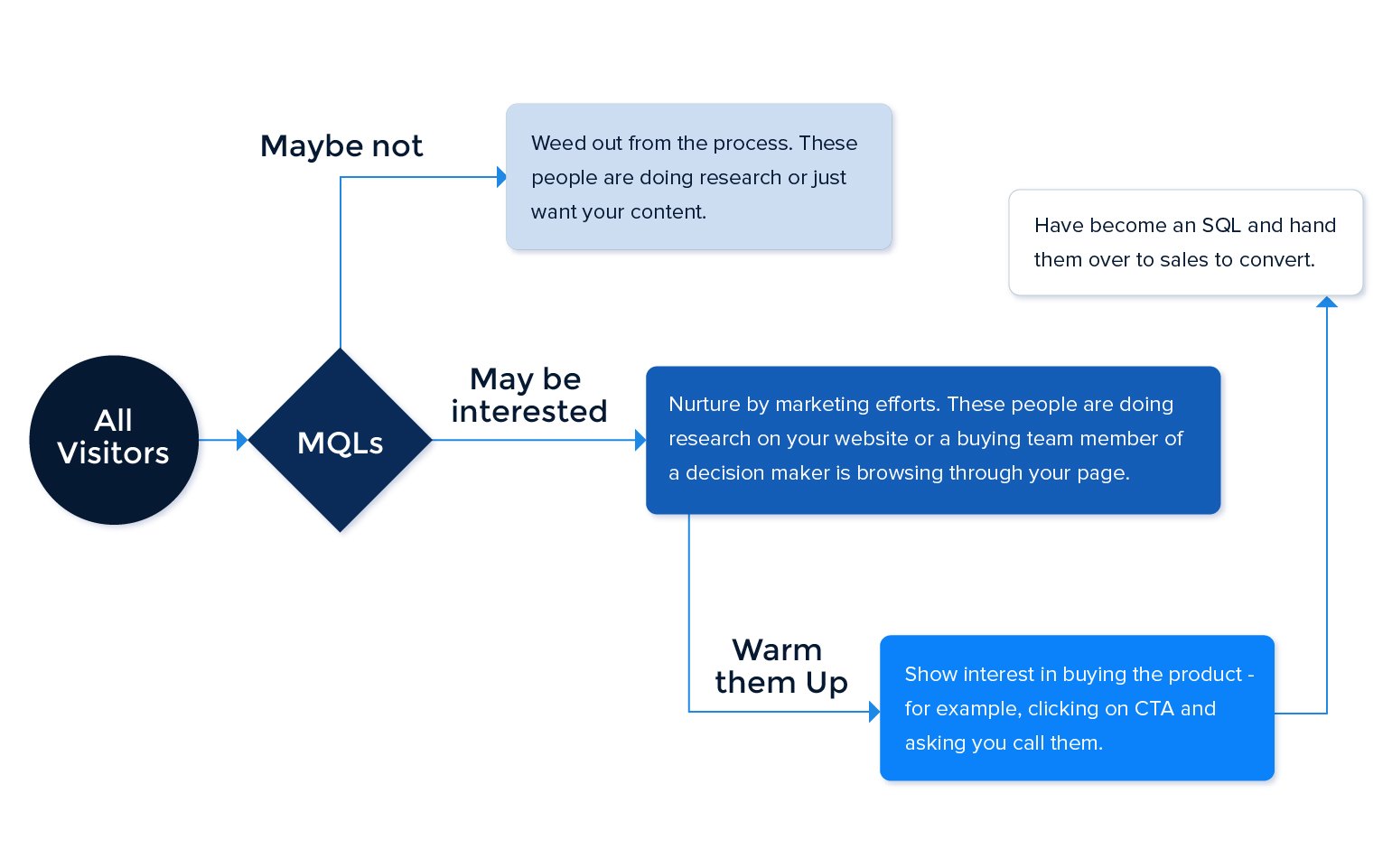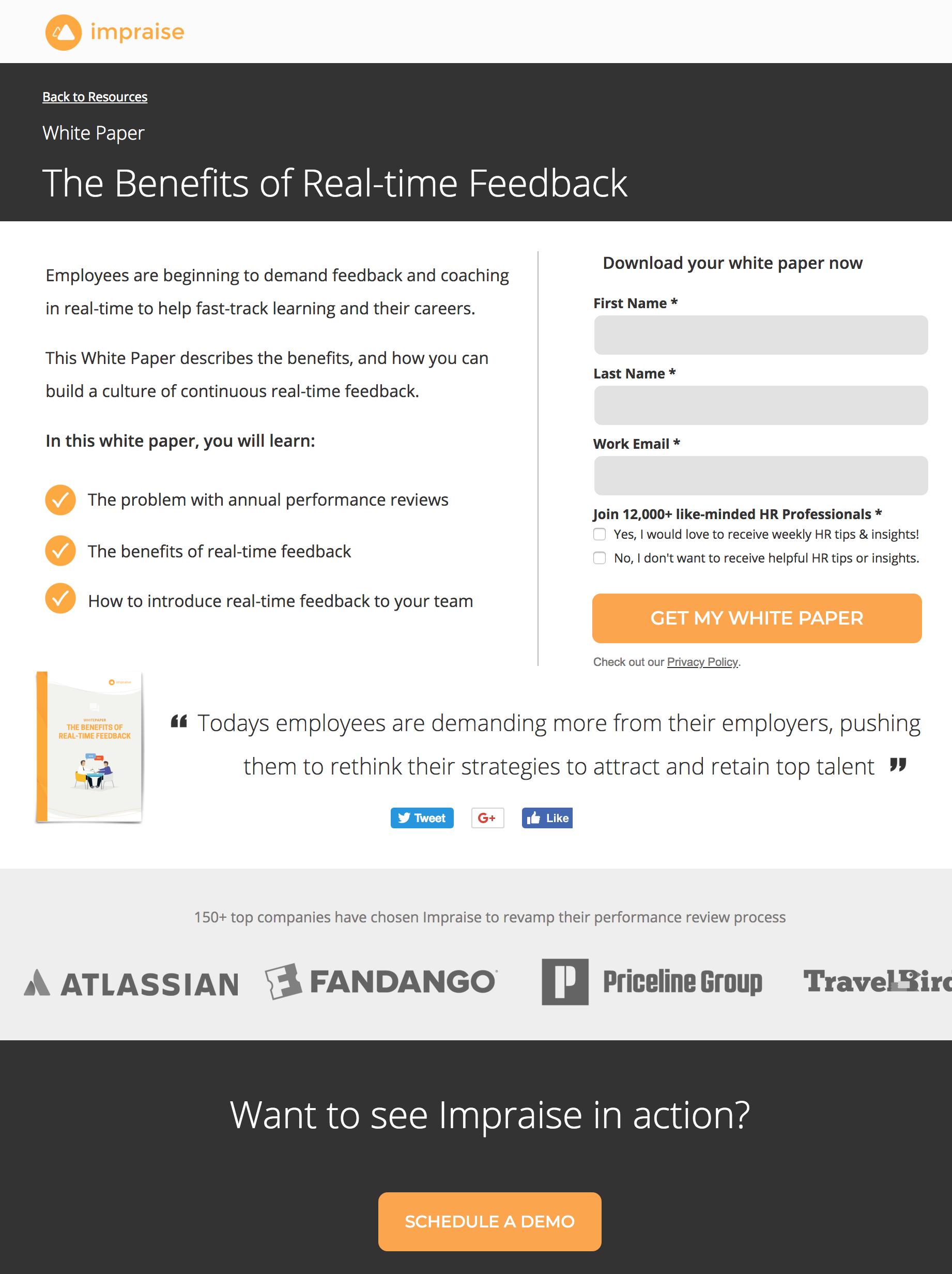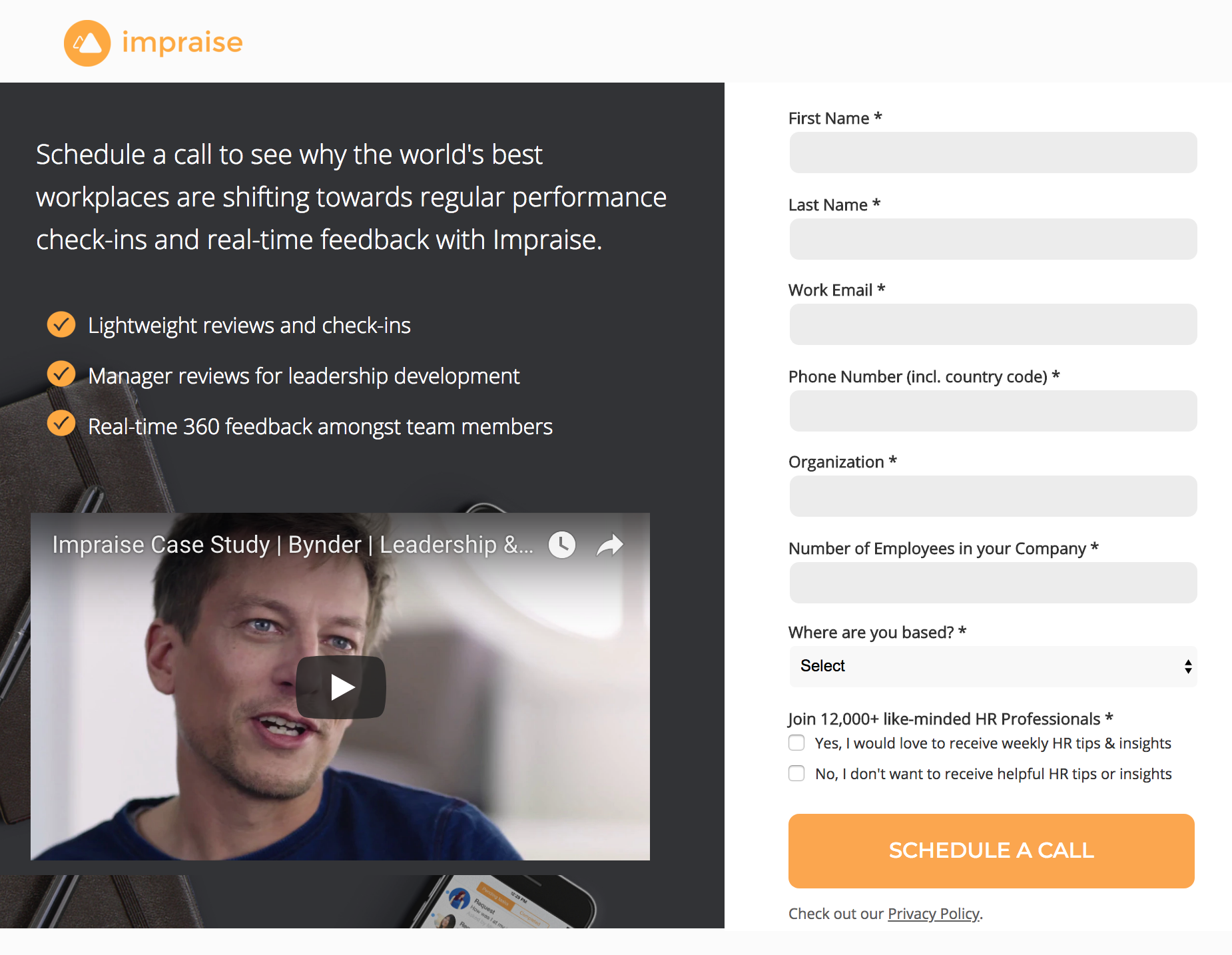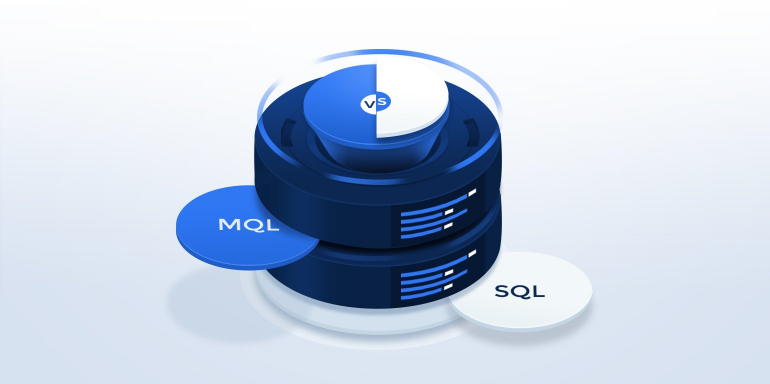MQL vs. SQL is a common area of disagreement between marketing and sales. However, this is an issue that needs to be addressed, since the end goal should be the same for both departments. While marketing teams want to generate maximum leads, they still want to help earn as much money as possible for the company. Getting more sales qualified leads will help accomplish that.
To generate max revenue, marketing and sales teams must work closely together to clearly decide what constitutes an MQL and an SQL, and to agree upon a hand-off process to push as many leads as possible through the sales funnel.
What’s the difference between MQL and SQL?
The exact definitions of MQL and SQL vary based upon a business’ unique customer lifecycle and the agreement that’s made between marketing and sales. However, there are general definitions of each to help you understand the difference between the two.
What is a marketing qualified lead?
An MQL is a prospect that your marketing team deems more likely to eventually turn into a sale than other leads, but isn’t quite ready to buy yet. This is typically determined based on lead intelligence, often informed by closed-loop analytics. These leads require additional marketing assistance before they’re ready to receive a sales call.
Madeleine Xavier, Director of Demand Generation at Instapage sums it up:
An MQL is a lead that the marketing team deems most likely to become an Enterprise customer based on firmographic fit (company size, ad spend, role, etc.) and behavioral scoring. These are the only leads we send over to sales to help them be more focused and effective.
What is a sales qualified lead?
An SQL is a prospective customer that has progressed past the engagement stage, has been thoroughly analyzed by both marketing and sales, and has been deemed ready for the next stage in the sales process — a direct sales push. These leads have displayed intent to buy, and have met lead qualification criteria determining that they’re a right fit for the product or service. All they need now is more lead nurturing for conversion into a paying customer:

Steve Brancale, Head of Sales at Instapage, adds:
An SQL is any lead that we’ve accepted, reached out to (based on company size, role, ad spend, page requirements, demo request message), and booked an initial discovery meeting with.
Although the primary difference between MQL and SQL is readiness to buy, the lines can still become blurred, and there’s often contrasting opinions about where leads fall.
Marketing qualified lead vs. sales qualified lead
Marketing and sales teams tend to approach the topic differently; but it is paramount they work together to determine where each lead is in the buyer’s journey. As many as 90% of MQLs are never converted to SQLs because they were falsely identified as MQLs too early in the buyer’s journey.
There are several elements that teams can analyze together to avoid eliminating prospects from the journey altogether, and wasting your marketing budget and reducing your ROI:
Lead behavior
A visitor’s behavior on your website, or how they engage with your company online, is a great determinant of whether they should be considered an MQL or SQL. Some general behavioral characteristics to monitor and consider include:
First time visitor vs. repeat visitor
If this is only their first visit to your website, they should be considered an MQL. If they’ve visited your website three or four times to look at relevant product or service pages, they might be ready to be classified as an SQL.
Conversion count
How many times did a visitor complete a form on your post-click landing page offers? An MQL has likely only downloaded one or two pieces of content, while an SQL has probably converted on multiple different offers.
Stage in the buying cycle
In addition to the number of times a prospect has converted, the actual conversion itself plays a role in placing a lead in the MQL or SQL category. What type of post-click landing page offer did they redeem? If someone downloads an informational white paper, for example, they still belong in the MQL category. If they’ve requested a live demo, they could be ready for a direct sale.
Impraise is a great example to demonstrate. On this first post-click landing page, they offer a free white paper (typical top-of-funnel content) that only requests first name, last name, and email:

However, the CTA in the footer for an Impraise demo leads to this page below. Here you can see how the company collects additional information to qualify the lead as a legitimate sales opportunity (phone number, organization, number of employees, and location):

This isn’t to say that all conversions on this demo post-click landing page will be automatically sales qualified. Sales reps would also likely do their own research regarding the person’s job title and decision-making power before officially scheduling a demo with them. The examples clearly show a difference in how varying offers require more or less lead input.
Referring channel
It’s common for most of a company’s leads to come from a select few marketing channels — but what about those leads who actually convert into paying customers? For example, if you know a majority of customers come from Facebook and email marketing, the leads from those referring sources are likely to be more sales-qualified than those generated from Quora and Twitter.
Contact requests
Asking to be contacted is one of the easiest ways to tell that a lead is sales-qualified. While MQLs may request additional information, they don’t typically ask to be contacted otherwise. Many SQLs will actually ask to be contacted, and indicate that they’re willing to invest time discussing your product or service further. See Impraise demo example above.
Lead demographics
Demographics and customer profiling are critical for determining SQLs. Demographic information such as industry, job role, and company size are indicative of how interested and invested they are in purchasing your product or service. Other profiling details like pain points, persona, or budget can also be relevant when qualifying a lead as an MQL or SQL.
If certain leads fit an ideal customer profile (as outlined by your marketing and sales teams), these are the most appropriate ones to let your sales team handle.
Lead scoring
Lead scoring takes into consideration both lead behavior and lead demographics, assigning a value or score to each lead based on their information and interactions with your business. This is important because it prevents your sales team reaching out before they’re ready to buy, which could ultimately destroy any trust you established up to that point.
Many companies score leads based on these basic components:
- Demographic information
- Company information
- Online behavior
- Email subscription status
- Email engagement
- Social engagement
Defining MQL vs. SQL is the foundation of the lead hand-off process. After scoring leads, you can better identify them as MQLs or SQLs, knowing which ones to continue nurturing, and which ones to pass on directly to the sales team.
Handing off an MQL to sales
Once you’ve established MQL and SQL definitions, you know which leads fit where — but now you must determine when and how to pass qualified sales leads to the sales team.
First, both marketing and sales teams must consider the entire customer lifecycle:

A broken down scenario might look something like this:
- You generate subscribers and leads through content and social media marketing. They subscribe to your blog or download an ebook, but don’t provide any sales-closing information yet (only a name and email address, for example).
- The prospect reads through the ebook and visits your site to learn more about your products, services, and prices. At this stage, the lead is considered an MQL and requires additional nurturing by the marketing team.
- The marketing team follows and retargets with a demo ad in several locations. After converting on a demo request post-click landing page that asks for more qualifying information (job title, ad spend, software used, etc.), the lead is more likely an SQL at this point.
Then, a smooth transition from an MQL to an SQL ultimately depends on how well sales teams and marketing teams work together and share data. Discuss what information is required to pass along, and what the follow-up will look like based on lead intelligence and behavior. The more aligned the two teams’ goals are — and the better their communication — the more productive lead generation will be.
It’s all about balance
Rather than MQL vs. SQL, businesses should adopt an MQL and SQL mentality. Marketing and sales have an equally important role to fulfill and the two lead types shouldn’t be compared against each other.
To avoid losing leads, qualification criteria must be outlined and adhered to, and leads must be smoothly handed off from marketing to sales. The better the collaboration between the two teams, the stronger the SQLs will be, and the more deals you can close.
To turn ad clicks into conversions, create dedicated, fast-loading post-click pages for every offer. See how to provide all of your audiences with unique post-click landing pages by signing up for an Instapage Enterprise demo today.

See the Instapage Enterprise Plan in Action.
Demo includes AdMap™, Personalization, AMP,
Global Blocks, heatmaps & more.
